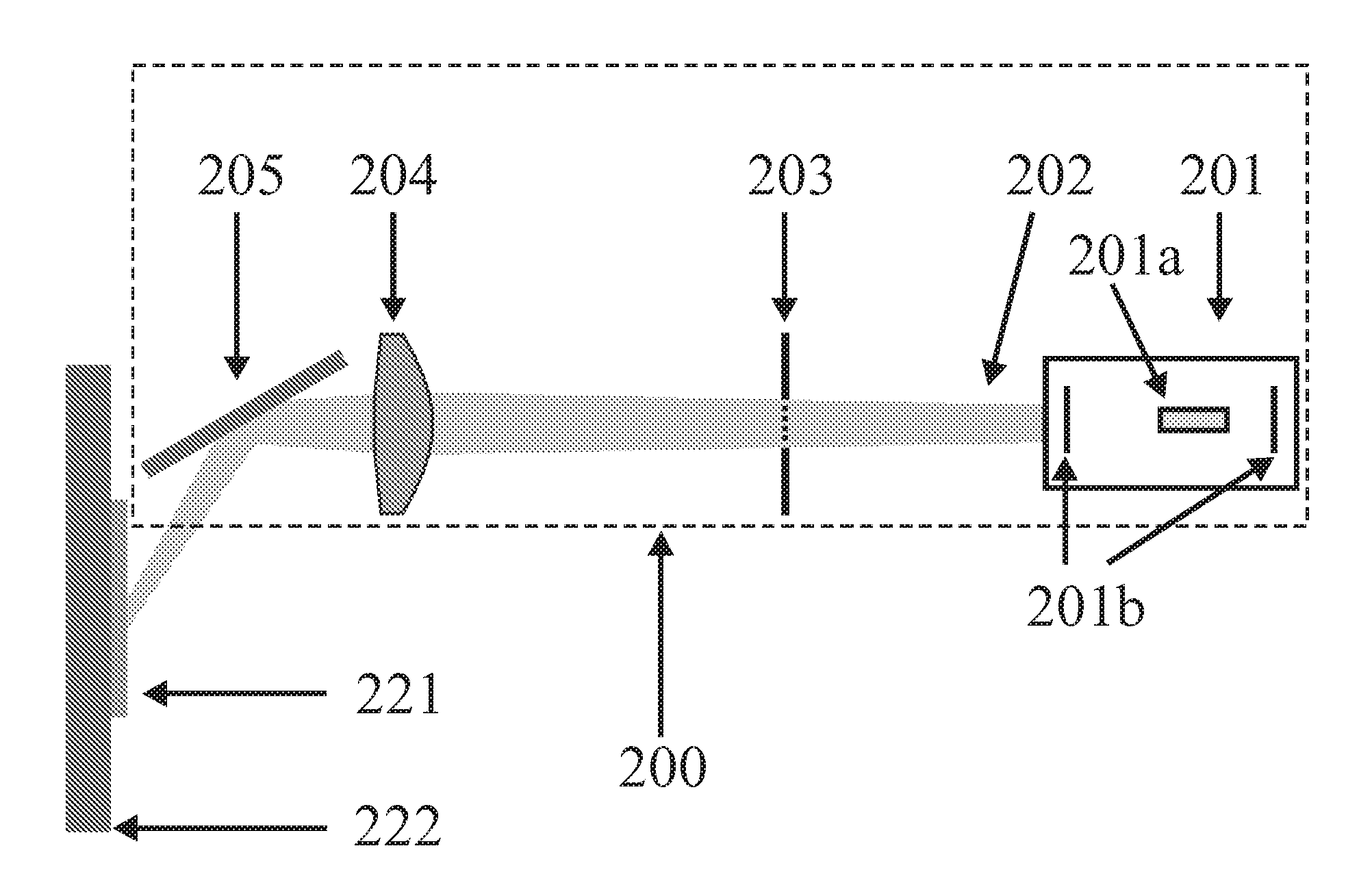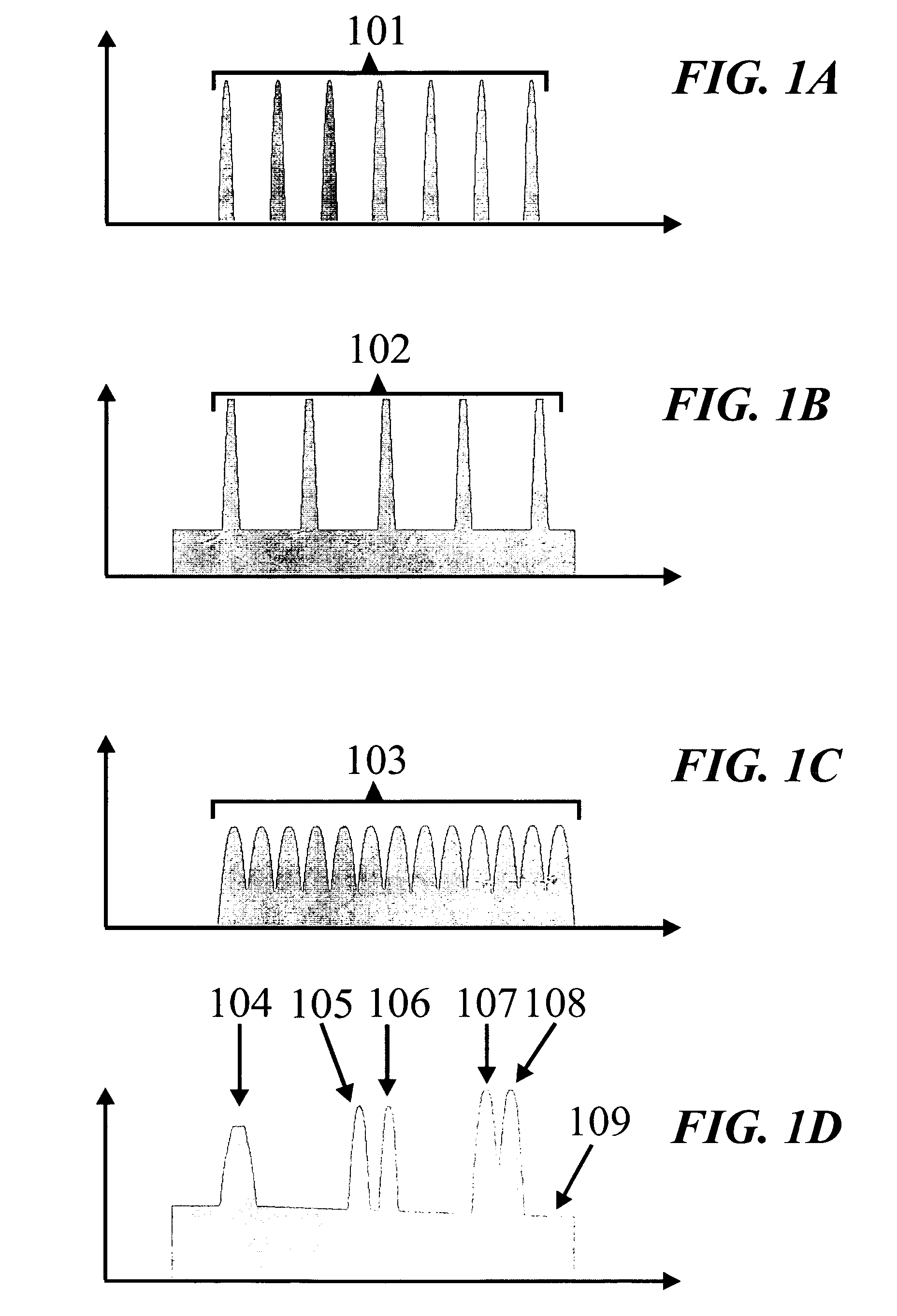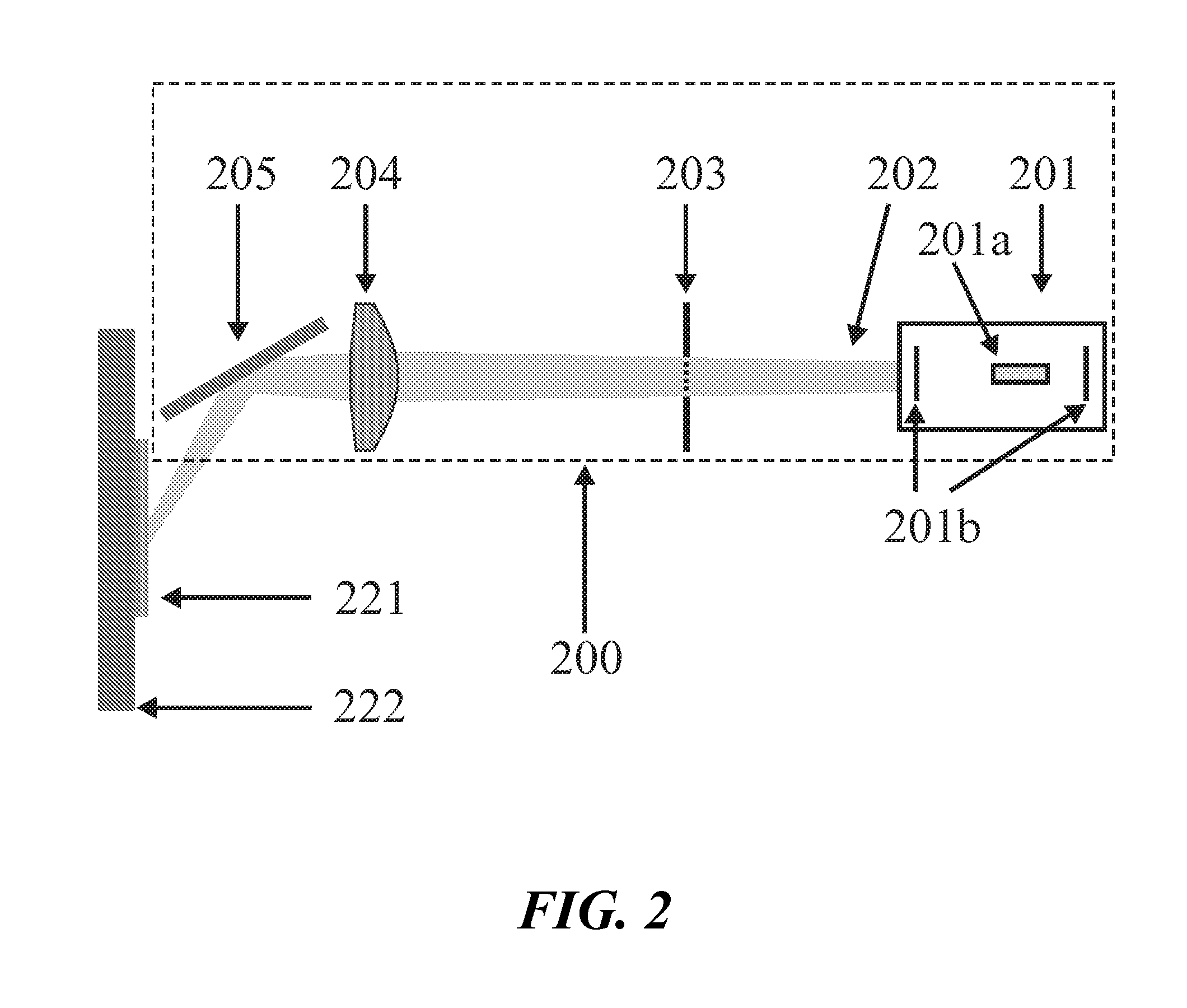Laser system for the ionization of a sample by matrix-assisted laser desorption in mass spectrometric analysis
a matrix-assisted laser and mass spectrometric analysis technology, which is applied in the direction of optical resonator shape and construction, particle separator tube details, separation processes, etc., can solve the problems of inability to reproduce pulsed gas discharge, inability to ionize samples, and inability to achieve mass spectrometric analysis quality and robustness significantly improved, the effect of improving the ionization efficiency and mass resolution and even the signal-to-noise ratio
- Summary
- Abstract
- Description
- Claims
- Application Information
AI Technical Summary
Benefits of technology
Problems solved by technology
Method used
Image
Examples
first embodiment
[0048]FIG. 2 illustrates a laser system (200) according to the invention for matrix-assisted laser desorption / ionization in schematic representation. The laser beam (202) is generated in the schematically represented laser unit (201) so as to be temporally pulsed. The set-up required to excite the laser, the laser medium 201a itself, an optical resonator 201b and a variable energy attenuator are located in the laser unit (201). The laser beam (202) illuminates the grid-shaped mask (203), which has a structure comprising orthogonally arranged grid bars within a square aperture. The grid-shaped mask (203) is completely impermeable to the laser beam (202) outside the square aperture and on the grid bars, and increases the spatial modulation of the intensity in the beam profile according to the invention. The lens (204) images the grid-shaped mask (203) via the tilting mirror (205) onto the sample (221).
[0049]Together with other samples not shown, the sample (221) is prepared on a sampl...
second embodiment
[0063]FIG. 5 shows a laser system (500) according to the invention. A pulsed laser beam is generated in the laser unit (501, comprising a laser medium 501a and an optical resonator 501b) and coupled by the lens (502) into an optical fiber (503) (multimode fiber). The fiber output (504) is imaged onto the sample (521) by the lens (505) and the tilting mirror (506).
[0064]In contrast to the prior art, the multimode fiber (503) is not utilized to homogenize the beam profile but, according to the invention, to increase the spatial modulation of the intensity. This requires that the length of the multimode fiber (503) is chosen so that the temporal coherence of the laser beam is greater than the transmission time difference of the transverse fiber modes. In this case, the intensity distribution at the fiber output (504) is no longer given by the superimposition of the intensities of the transverse fiber modes but by the interference of the electromagnetic fields of the individual fiber mo...
third embodiment
[0067]FIG. 6 shows a laser system according to the invention (600). A pulsed laser beam is generated in the laser unit (601), and this beam illuminates a transparent plastic foil (603). The plastic foil (603) has different thicknesses at different places so that the spatial modulation of the phase in the beam profile of the laser beam (602) is increased. As is the case in the other preferred embodiments, the laser medium 601a, the set-up required to excite the laser, an optical resonator 601b and a variable attenuator are located in the laser unit (601).
[0068]If the phase-modulated laser beam (602) can propagate undisturbed, the far-field diffraction image of the plastic foil (603) occurs at a certain distance, and this image has a plurality of irregularly distributed intensity spots. The intensity spots occur as in a speckle pattern because of the random, spatially strongly modulated fluctuations in thickness of the plastic foil (603). However, intensity spots do not form initially...
PUM
 Login to View More
Login to View More Abstract
Description
Claims
Application Information
 Login to View More
Login to View More - R&D
- Intellectual Property
- Life Sciences
- Materials
- Tech Scout
- Unparalleled Data Quality
- Higher Quality Content
- 60% Fewer Hallucinations
Browse by: Latest US Patents, China's latest patents, Technical Efficacy Thesaurus, Application Domain, Technology Topic, Popular Technical Reports.
© 2025 PatSnap. All rights reserved.Legal|Privacy policy|Modern Slavery Act Transparency Statement|Sitemap|About US| Contact US: help@patsnap.com



